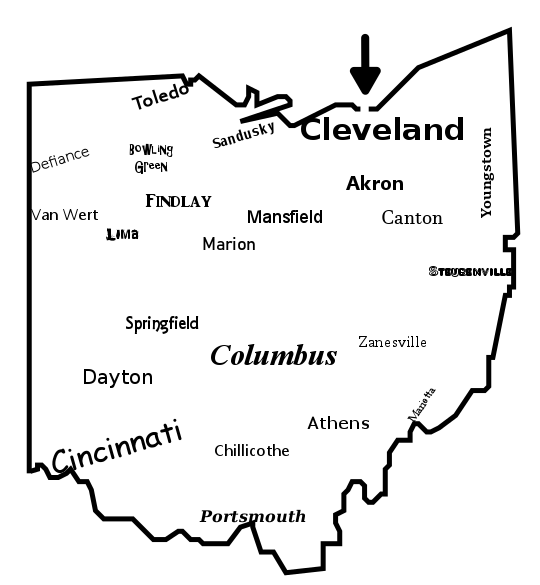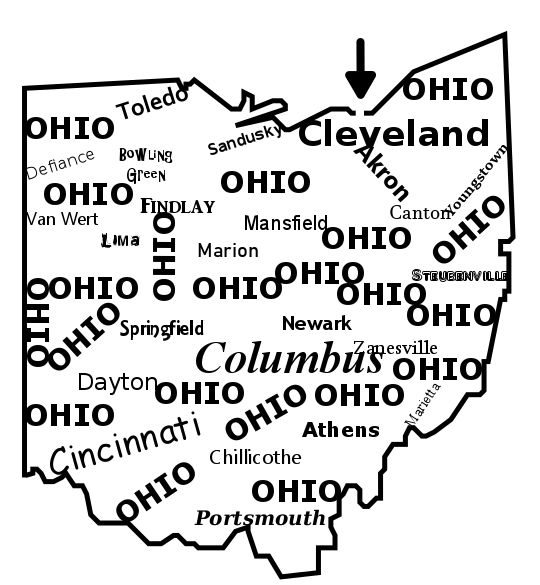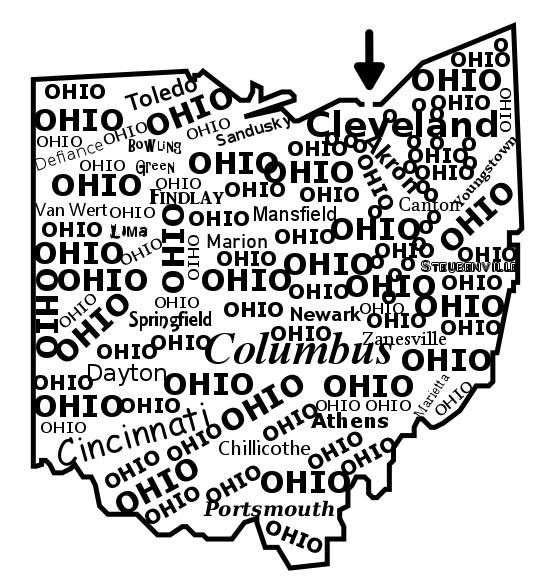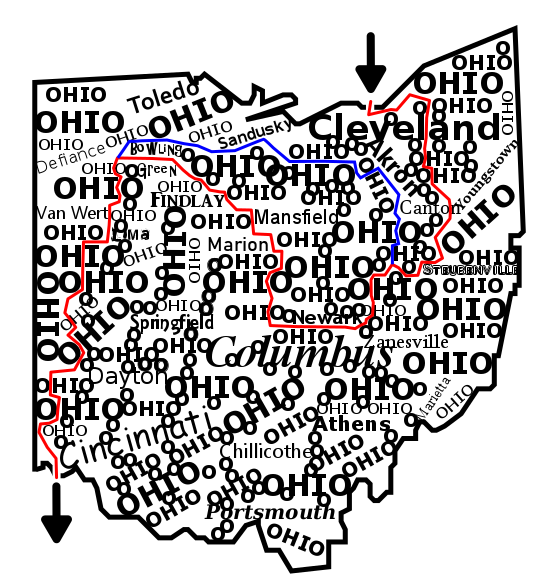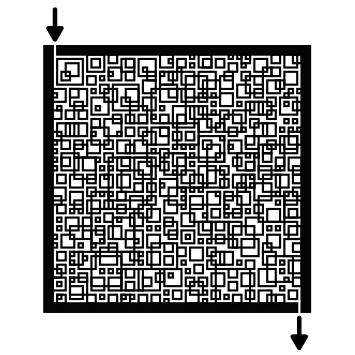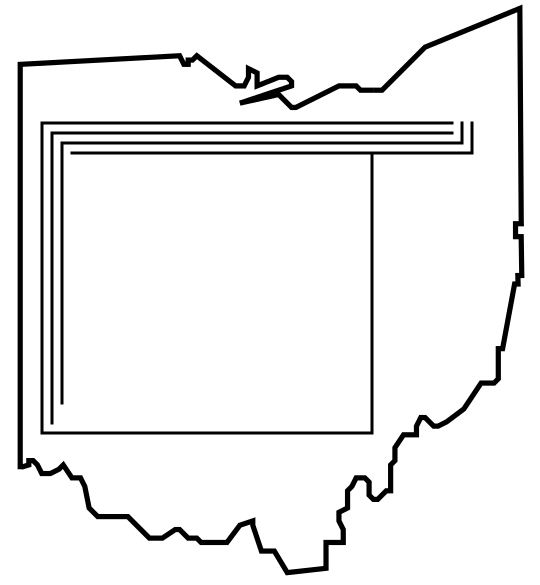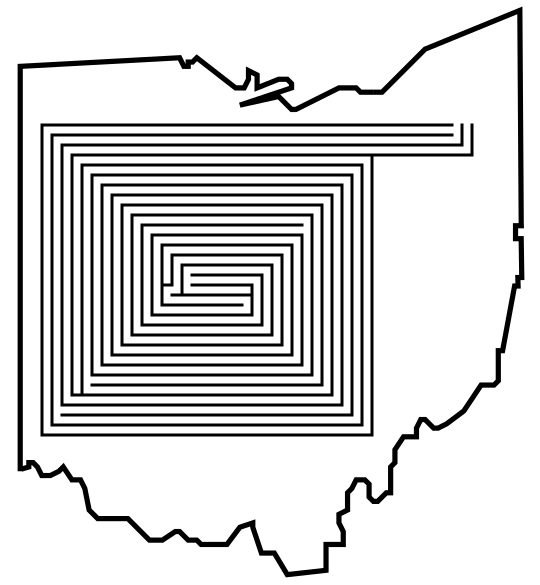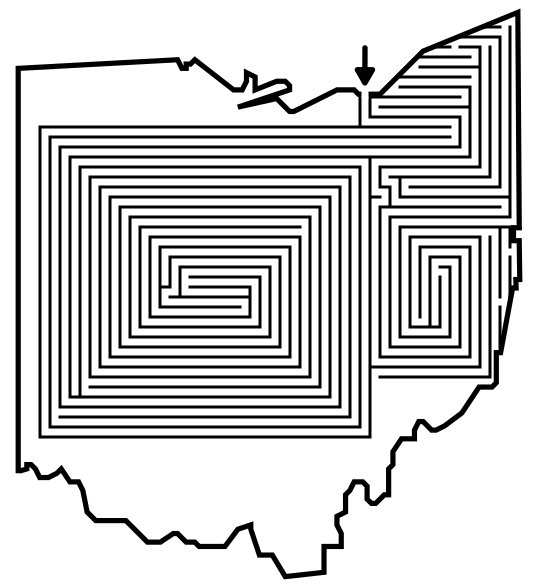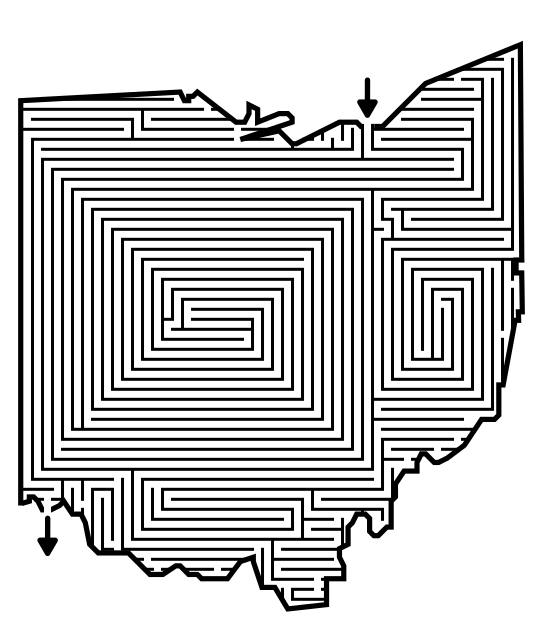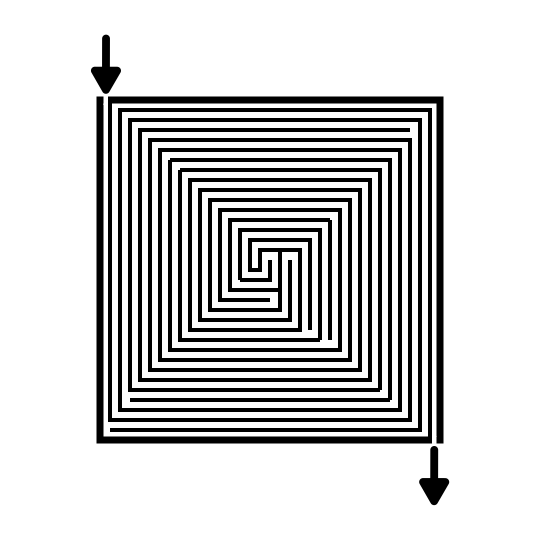In a series of posts I will show you how to make a maze in a wide variety of design constructions. The 13th type of maze construction is the Block Move maze. Let’s define what I mean, then get into the example. Every example will use the sample basic outline (the state of Ohio) to better illustrate the differences between each maze type.
Block Move Maze - A maze design that is in the form of a puzzle where the solver needs to create a complete pathway in X number of moves to reach the goal and solve the maze.
How to Make a Block Move Maze
Step 1 - Draw the Outline
The outline of the maze makes the outer wall of the maze. For a block maze it will almost always be a square or rectangle, but it can be anything that a block fits in. The outline should be thicker than the internal lines to give the maze definition. In the example below I chose the state of Ohio ONLY to be consistent to compare maze constructions.
Step 1.5 - Choose the Start and Goal
For the below example I chose the start of Cleveland and the goal of Cincinnati. Unlike most mazes there is NOT an opening for the start and goal of the Block Move maze.
Step 2 - Draw the Grid
A Block move made is made from a grid pattern that will form the blocks. The more blocks you create, the more difficult the puzzle will be to solve.
Step 3 - Create the Start and Goal Blocks
Fill your starting and ending blocks with a bright color to indicate their importance. You may also use “Start” and “Goal” in the grids, which would also negate the use of the arrows.
Step 4 - Fill Blocks
Begin filling blocks with a neutral color. The filled blocks will create the possible pathways for the solver to use. Leave gaps in the pathway with adjacent blocks that can be shifted into them to allow possible solutions.
And continue filling in more blocks, catering to the path you want the solver to take.
Step 5 - Complete the Block Move Maze
Finish adding blocks until you have made a solution you like. Check that alternative paths do not work and adjust blocks as needed. Add directions to explain how to solve the puzzle. I only allow movement in the 4 main directions, since the possibilities of possible solves go up exponentially when diagonal moves are allowed. Also, give the # of moves that the block move maze must be solved in.
Step 6 - Make the Maze Solution
Highlight the correct path in the final version of the maze to create the final Maze solution. While this is optional for some constructions of mazes, the difficulty of drawing and solving a Block Move maze means that providing a solution is essential. Each move in my example is highlighted with a different color. Some paths can be made by moving multiple blocks to the same space and are noted by multiple arrows of the same color. This is also a time when you can change any blocks if you choose. Do you want to keep moves that have 3+ blocks that can work ? (your option).
Additional Black Move Maze Examples
Here are two examples of Block mazes in a more typical square shape. The first is for Kids with only 3 shifts needed to solve the maze, while the second requiring 5 moves is only slightly more complex.
If you want to see more examples, or just practice solving some block move mazes, I made a booklet of them that is available for free download in the book section of the site.
Interested in learning how to make or draw other types of digital mazes ? I have step by step instructions on how to make over 40 different maze types.
If you prefer making labyrinths, you can find step by step labyrinth making instructions.











